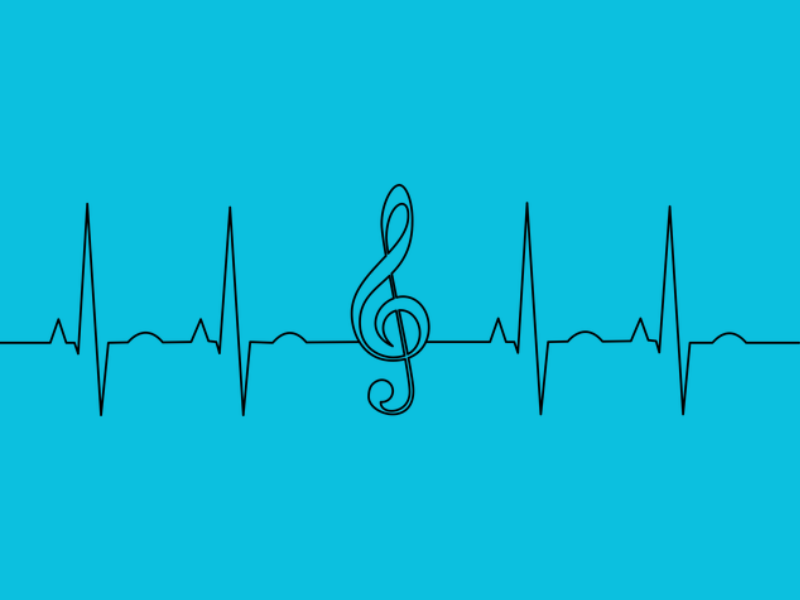Beats and Pulse in Music: Discovering the Rhythm
Have you ever found yourself tapping your foot or nodding your head along to your favourite tunes? Well, guess what? You're experiencing the power of beats and pulse in music! In this article, we'll explore what beats and pulse are, and how they play a vital role in creating rhythm. So, let's dive in.

Contents
- Understanding Beats
- Finding the Pulse
- Measuring Time
- Creating Rhythm
- How do Beats and Pulse Work in Music
Understanding Beats
When you listen to a song, you'll notice that it has a steady underlying rhythm. These rhythmic units are known as beats. Think of beats as the building blocks of music, like the steady ticking of a clock. They give music its sense of time and structure. Beats are usually organized in groups called measures or bars, which help musicians stay in sync.
Finding the Pulse
Now, you might be wondering, "Where do these beats come from?" Well, it's all about finding the pulse! The pulse is the regular, recurring emphasis or accent that you feel in the music. It's like the heartbeat of a song, guiding you through its flow. If you've ever tapped your foot or clapped your hands to the rhythm of a song, you've connected with the pulse.

Measuring Time
In music, beats are often organized into different time signatures, which determine the number of beats in each measure. The most common time signature is 4/4, also known as "common time." This means there are four beats in each measure, and the crotchet (quarter note) (♪) represents one beat. Other time signatures, like 3/4 or 6/8, have a different number of beats per measure, giving each song a unique feel.
Creating Rhythm
Beats and pulse are what makes music come alive and get your body moving. They set the pace, and different rhythms can evoke different emotions. Whether it's a fast and energetic beat that makes you want to dance or a slow and mellow rhythm that relaxes you, beats and pulse help create the mood and atmosphere of a song.
As you continue to explore and enjoy music, pay attention to the beats and pulse that drive your favourite songs. Feel the rhythm, let it guide you, and don't be afraid to let loose and dance to the music! Remember, beats and pulse bring music to life, and understanding them opens up a whole new world of musical possibilities.
How do beats and pulse work in music?
-
Pop Music Groove: Imagine you're listening to a catchy pop song with a strong beat. If you pay close attention, you'll notice that the pulse is steady and consistent throughout the song. It's what makes you want to tap your foot or clap your hands along to the rhythm. Try counting along: "1, 2, 3, 4" – each number represents a beat. The beat remains the same, while the melodies and lyrics weave in and out, creating a captivating musical experience.
-
Upbeat Dance Track: Let's switch gears to an upbeat dance track. In this genre, the beats tend to be faster and more energetic. Close your eyes and focus on the pulse. Can you feel it driving the music forward? The beats might be organised in groups of four or eight, keeping the energy high and making you want to hit the dance floor. The pulse becomes your guide as you move your body to the rhythm, syncing with the music.
-
Soulful Ballad: Now, let's explore a soulful ballad. These songs often have a slower tempo, but the beats and pulse still play a crucial role in creating emotion. Listen carefully to the gentle beats, and you'll notice that they're more subdued and relaxed compared to the previous examples. The pulse gives the song a sense of vulnerability and allows the singer's heartfelt lyrics to shine. It's the pulse that helps you connect emotionally with the music, allowing it to resonate within you.
-
Syncopation in Jazz: In jazz music, beats and pulse can get more complex, introducing a technique called syncopation. Syncopation involves placing accents or beats on unexpected or offbeat moments. This adds an exciting and unpredictable element to the music. Try listening to a jazz piece and pay attention to the unexpected accents or beats that don't align with the regular pulse. It creates a sense of rhythmical tension and adds flair to the overall composition.
Remember, these examples only scratch the surface of the diverse ways beats and pulse are used in music. From classical to hip-hop, country to reggae, beats and pulse are present in various genres, each with its own unique rhythmical characteristics.
So, the next time you listen to your favourite songs, try to identify the beats, feel the pulse, and appreciate how they contribute to the overall musical experience. Let the rhythm move you and have fun exploring the world of music!
If you're interested in exploring beats, pulse, and the fascinating world of music theory, have a chat with a professional music teacher. Music theory is like the language of music—it helps you understand how melodies, harmonies, and rhythms work together. You can find music teachers who specialise in teaching music theory and can provide valuable lessons and insights that will deepen your understanding and enhance your musical journey.
Want to read more? I would suggest taking a look at our glossary of musical terms or reading our articles on Rhythm and Tempo to learn more about the wonders of music theory.
